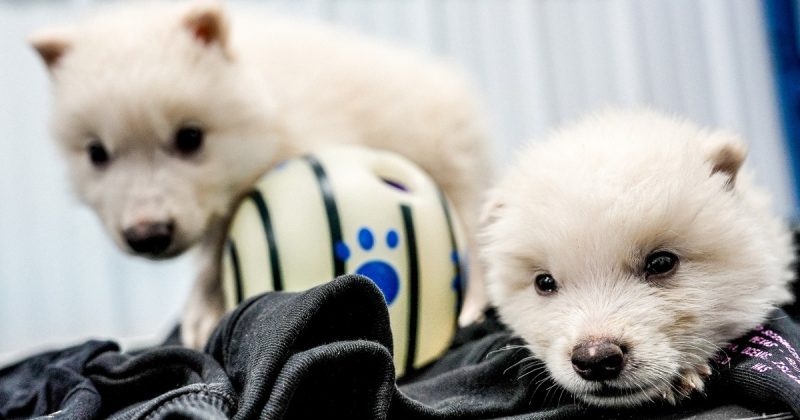
Scientists have achieved a remarkable feat: the creation of three genetically engineered wolves bearing a striking resemblance to the extinct dire wolf. These pups, currently residing in a secure, undisclosed location within the US, boast long white fur, robust jaws, and a projected adult weight of 140 pounds. The project, spearheaded by Colossal Biosciences, involved analyzing ancient DNA from dire wolf fossils—a 13,000-year-old tooth and a 72,000-year-old skull fragment—to identify key genetic traits.
The process utilized CRISPR technology to modify the genetic material of gray wolf blood cells, which were then transferred into dog egg cells. These embryos were subsequently implanted into surrogate mothers, resulting in the birth of the three pups after 62 days. While visually impressive, the achievement is not without its caveats. Experts emphasize that this is not a true resurrection of the dire wolf; rather, it’s a creation of an animal that superficially resembles its extinct relative.
Vincent Lynch, a biologist at the University at Buffalo, aptly points out that this only creates something that *looks* like a dire wolf, not a functional equivalent. Crucially, these engineered wolves lack the behavioral adaptations and learned hunting skills that would have been passed down through generations of wild dire wolves. The pups will likely never develop the hunting prowess of their extinct ancestors, as they won’t have the opportunity to learn from wild dire wolf parents.
Beyond the dire wolf project, Colossal Biosciences also announced the successful cloning of four red wolves, aiming to enhance the genetic diversity within the critically endangered red wolf population. This cloning technique, deemed less invasive than others, holds promise for broader conservation efforts. However, the process still requires sedation of wild wolves for blood collection, a significant challenge.
The project has sparked both excitement and debate. While Interior Secretary Doug Burgum lauded the work as a ‘thrilling new era of scientific wonder,’ critics caution that recreating the physical appearance of an extinct species doesn’t equate to restoring its ecological role. The dire wolf’s extinct ecological niche simply cannot be filled by these genetically engineered pups in today’s landscape.
The work raises profound questions about the ethical implications and limitations of de-extinction efforts. While the technological advancements are undeniably impressive, the true revival of a species remains a complex challenge extending far beyond genetic manipulation.










